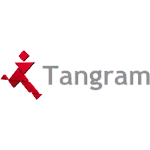What We Measure
What We Measure

9 Key Performance Indicators
Your Teamlytica report gives you and your team a breakdown of each of the major nine categories within the report. All are colour-coded for ease of use.
The nine categories we score against are based on acknowledged academic, management and team diagnostics. Each question is carefully worded to ensure it can be answered by anyone completing the survey.
Each question is answered via a sliding scale of 1-10 – from ‘Never’ to ‘Always’. Each of the questions and categories are interlinked and interdependent and produce a clear and thorough diagnosis of where the team is ‘at’.

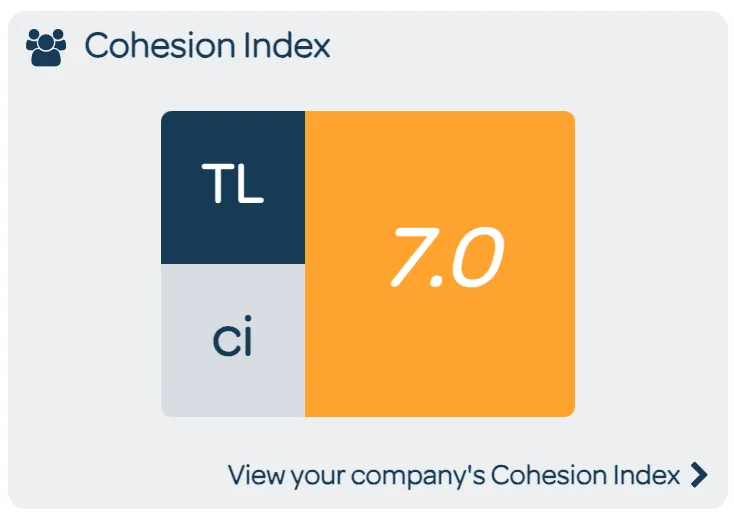
Team Cohesion
Team Cohesion
Your Teamlytica report gives you and your team a breakdown of each of the major nine categories within the report. All are colour-coded for ease of use.
The nine categories we score against are based around acknowledged academic, management and team diagnostics. Each question is carefully worded to ensure it can be answered by anyone completing the survey.
Each question is answered via a sliding scale of 1-10 – from ‘Never’ to ‘Always’. Each of the questions and categories are interlinked and inter-dependent and produce a clear and thorough diagnosis of where the team is ‘at’.
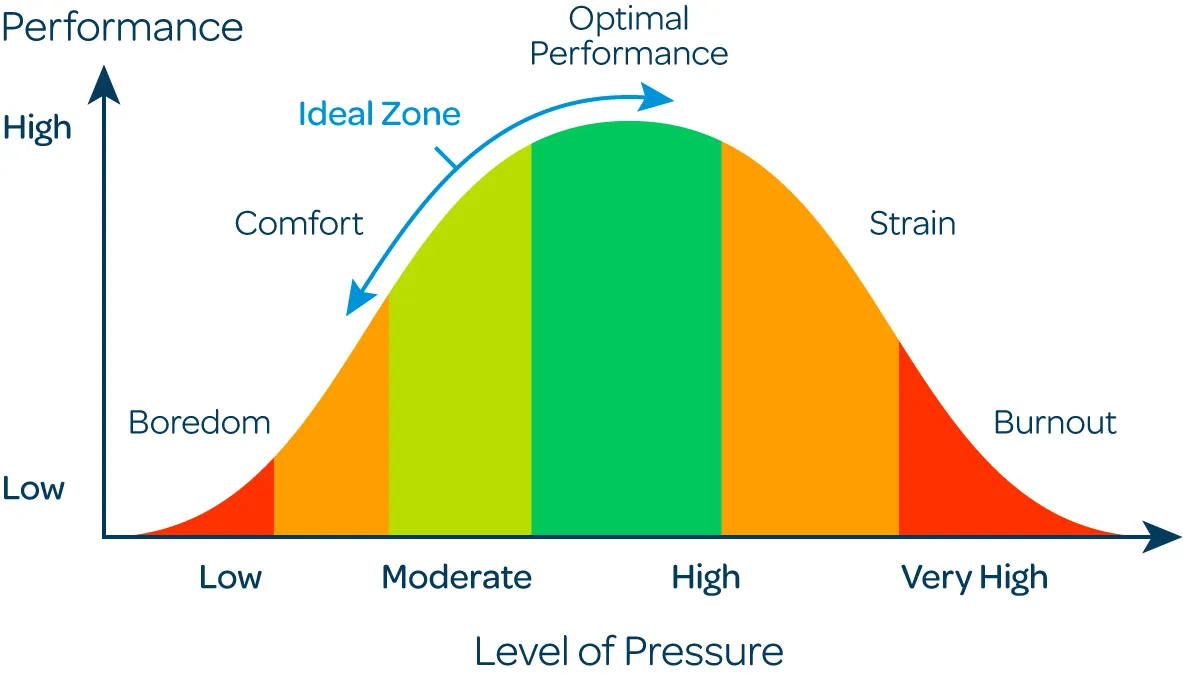
Team Stress Indicators
Team Stress Indicators
TeamLytica's stress curve analysis is a powerful tool for team leaders and members alike. By tracking the stress curve over time, teams can assess the effectiveness of their strategies for stress management and identify areas for improvement.
Understanding how stress impacts team dynamics allows for targeted interventions and the creation of a healthier and more resilient work environment.
Ultimately, by leveraging the stress curve, TeamLytica empowers teams to proactively manage stress, foster collaboration, and achieve their goals with greater efficiency and harmony.


Team Morale
Psychological safety is a fundamental aspect of high-performing teams, and at TeamLytica, we prioritise its understanding and cultivation. Psychological safety refers to an environment where team members feel safe to take risks, express their ideas, and be their authentic selves without fear of judgment or negative consequences.
It creates a space where individuals feel comfortable sharing their opinions, making mistakes, and seeking feedback. By fostering psychological safety within teams, TeamLytica helps unlock the full potential of each member, leading to increased collaboration, innovation, and overall team effectiveness.
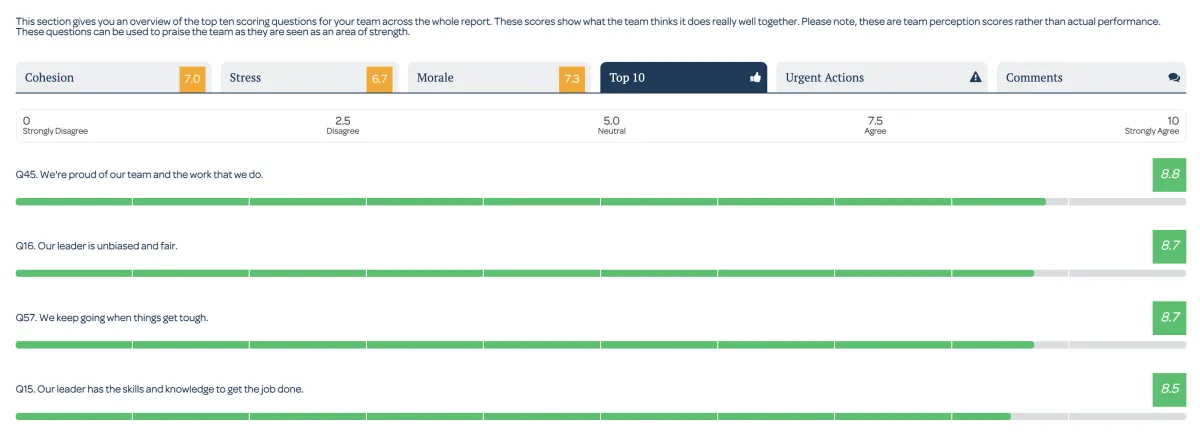
Top Ten Scores
Your Teamlytica report gives you and your team a breakdown of each of the major nine categories within the report. All are colour-coded for ease of use.
The nine categories we score against are based around acknowledged academic, management and team diagnostics. Each question is carefully worded to ensure it can be answered by anyone completing the survey.
Each question is answered via a sliding scale of 1-10 – from ‘Never’ to ‘Always’. Each of the questions and categories are interlinked and inter-dependent and produce a clear and thorough diagnosis of where the team is ‘at’.
Urgent Actions
Urgent Actions
TeamLytica's stress curve analysis is a powerful tool for team leaders and members alike. By tracking the stress curve over time, teams can assess the effectiveness of their strategies for stress management and identify areas for improvement.
Understanding how stress impacts team dynamics allows for targeted interventions and the creation of a healthier and more resilient work environment.
Ultimately, by leveraging the stress curve, TeamLytica empowers teams to proactively manage stress, foster collaboration, and achieve their goals with greater efficiency and harmony.
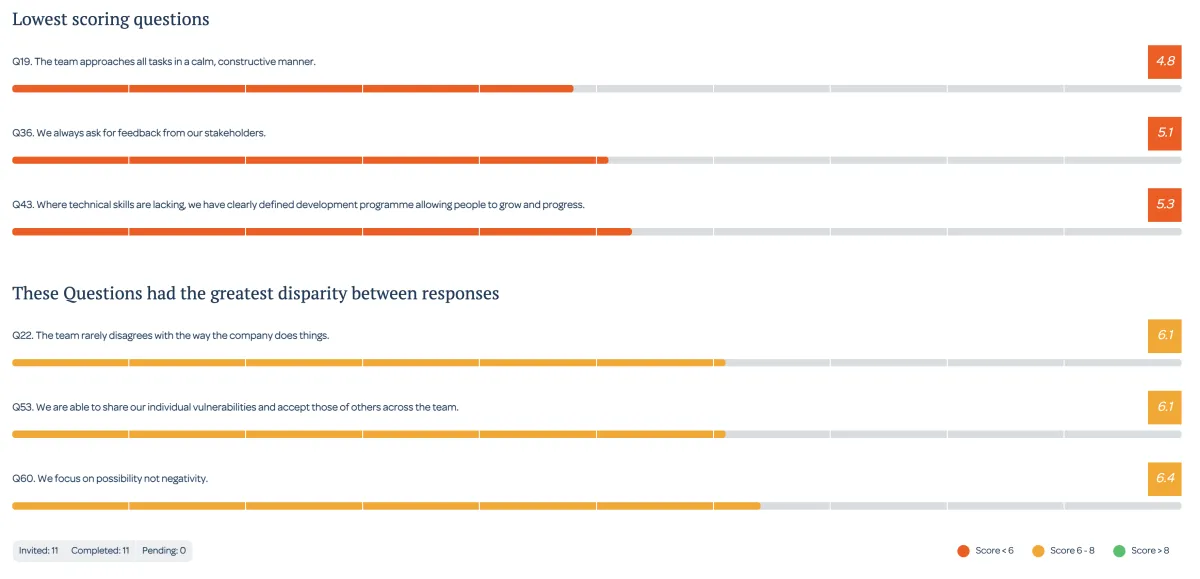

Open Text Responses
Your Teamlytica report gives you and your team a breakdown of each of the major nine categories within the report. All are colour-coded for ease of use.
The nine categories we score against are based around acknowledged academic, management and team diagnostics. Each question is carefully worded to ensure it can be answered by anyone completing the survey.
Each question is answered via a sliding scale of 1-10 – from ‘Never’ to ‘Always’. Each of the questions and categories are interlinked and inter-dependent and produce a clear and thorough diagnosis of where the team is ‘at’.
TeamLytica's Nine Categories
Our unique reporting system gathers information on the nine fundamental categories which are key to a happy, healthy team dynamic.
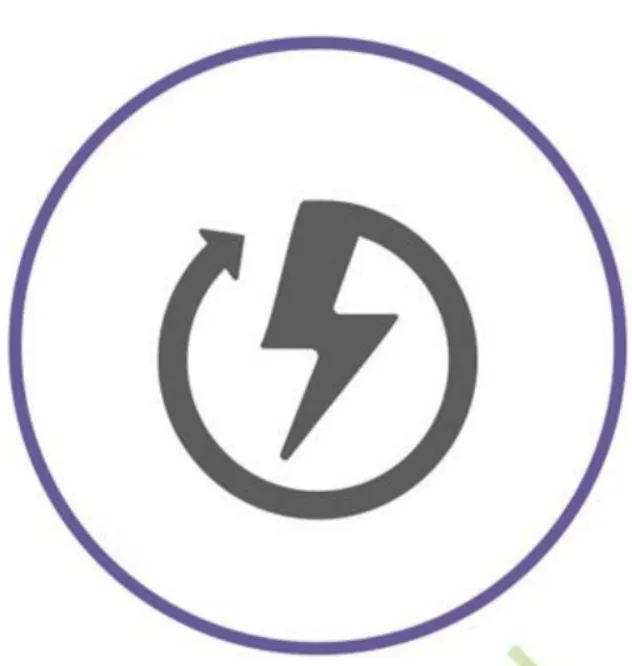
Energy
The Energy category focuses on assessing team members' motivation, enthusiasm, and engagement. It measures their passion for their work and ability to maintain high energy levels. By understanding and optimising team energy, organisations can foster productivity, creativity, and a positive work atmosphere.

Leadership
The Leadership category evaluates the effectiveness of team leaders in guiding and inspiring their members. It assesses leadership qualities, communication skills, decision-making abilities, and their impact on team performance. Effective leadership motivates team members, fosters growth, and contributes to a culture of success.

Capability
The Capability category assesses team members' skills, expertise, and knowledge. It evaluates their collective capabilities to accomplish tasks, solve problems, and meet objectives. By identifying areas for improvement and providing development opportunities, organisations can enhance their team's capabilities and achieve optimal performance.

Trust
Trust is a critical component of successful teamwork. The Trust category measures the level of trust and psychological safety within a team. It evaluates factors such as reliability, transparency, and accountability. By fostering trust, organisations create an environment where team members feel safe to take risks, express opinions, and collaborate effectively.

Delivery
The Delivery category assesses a team's ability to meet deadlines, deliver high-quality work, and fulfil commitments. It focuses on project management, efficiency, and consistent results. Organisations can optimise their delivery capabilities by identifying areas of improvement, streamlining processes, and ensuring successful outcomes.
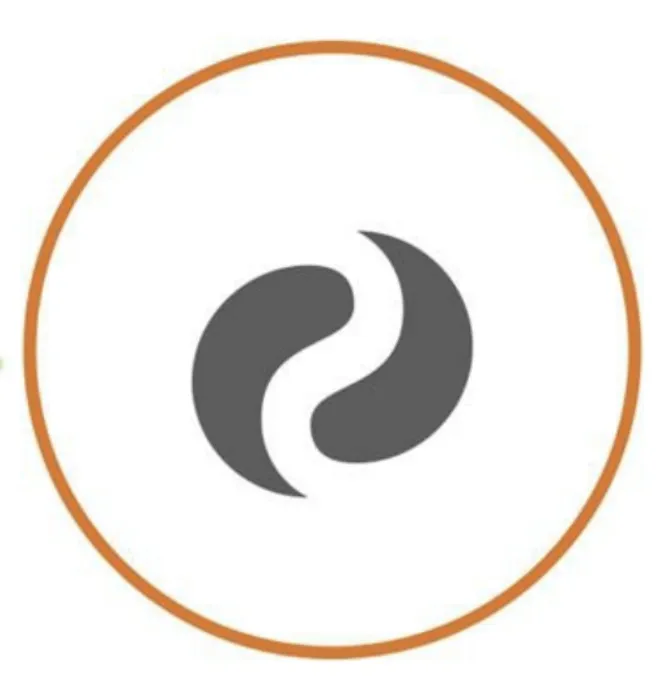
Harmony
The Harmony category evaluates a team's cooperation, communication, and synergy. It assesses how well team members work together, resolve conflicts, and maintain a positive team atmosphere. Organisations can foster collaboration and create a harmonious work environment by nurturing effective team dynamics and encouraging a supportive culture.
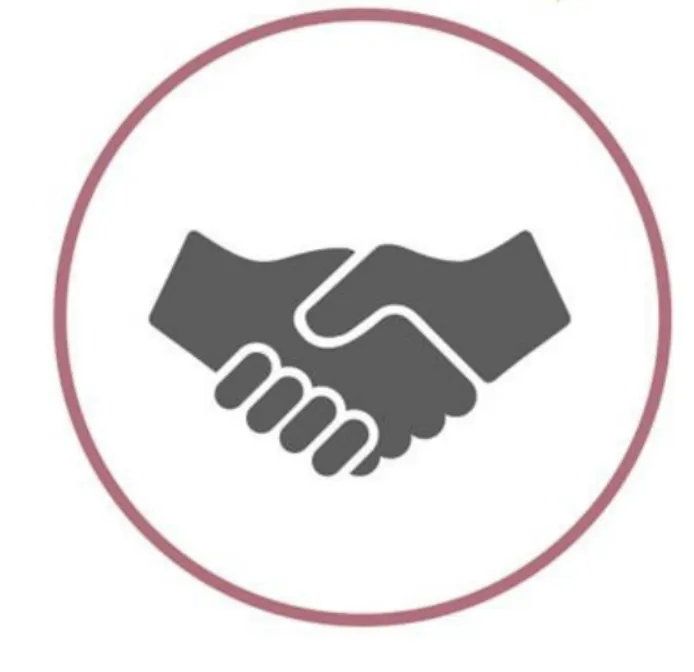
Stakeholders
The Stakeholders category assesses a team's relationship with external parties, such as clients, suppliers or partners. It evaluates how well the team understands stakeholder needs, manages expectations, and communicates effectively. Organisations can strengthen stakeholder relationships and drive success by aligning their efforts to meet these stakeholder requirements.

Accountability
The Accountability category evaluates how well team members take ownership of their responsibilities, meet commitments, and deliver on promises. It assesses personal and collective accountability within the team. Cultivating a culture of accountability fosters reliability, productivity, and overall team success.
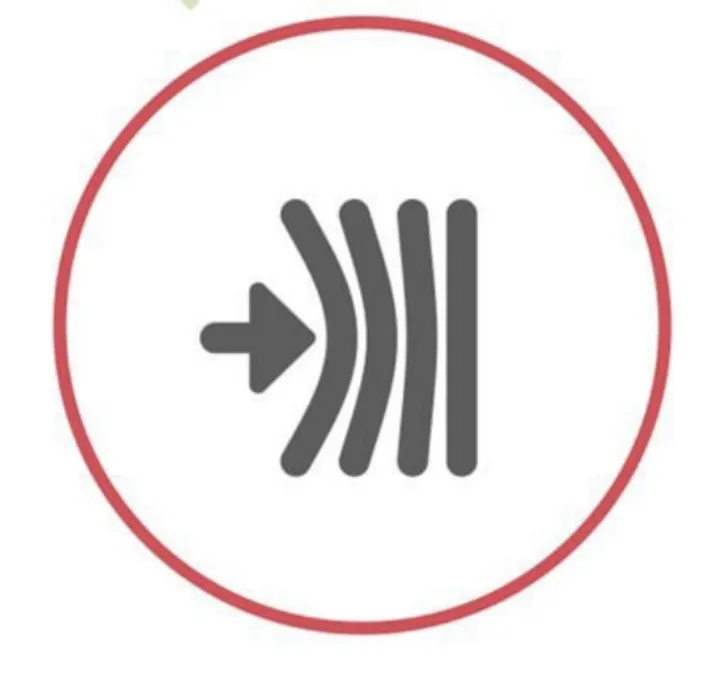
Resilience
Resilience refers to a team's ability to adapt, recover, and thrive in the face of challenges. The Resilience category evaluates how well teams cope with stress, embrace change, and overcome adversity. Organisations can enhance team resilience by providing support, promoting a growth mindset, and equipping teams with the tools to navigate obstacles
Would you like to see a TeamLytica report in action?
Enter your name and email address to receive your free Teamlytica sample report. We will deliver it directly to your Inbox.

Tyrelle Mcleod-Bentley
Director
Soccer Assist
The irony is not lost on us that we recruit and place the next generation of sports stars who all have to excel in teams. The Teamlytica platform has helped us get to a place where we're proud of our own team performances.

Anita Dev
Director
TeamWork ADL
The team reports have really helped our team and given our senior leaders the knowledge we've needed to make effective changes to the way we work and manage.

Steve Chown
Entrepreneurial Innovation Manager
TeamLytica's software has been identified as a valuable tool to check the effectiveness of newly combined teams in the Bank. We are using it to review their progress as the staff become more integrated.

Tyrelle Mcleod-Bentley
Director
Soccer Assist
The irony is not lost on us that we recruit and place the next generation of sports stars who all have to excel in teams. The Teamlytica platform has helped us get to a place where we're proud of our own team performances.

Anita Dev
Director
TeamWork ADL
The team reports have really helped our team and given our senior leaders the knowledge we've needed to make effective changes to the way we work and manage.

Steve Chown
Entrepreneurial Innovation Manager
TeamLytica's software has been identified as a valuable tool to check the effectiveness of newly combined teams in the Bank. We are using it to review their progress as the staff become more integrated.
Accredited Coaches
Only accredited coaches can use TeamLytica.
The training and support you get will ensure you have the right level of knowledge to be able to coach teams as well as individuals. Then our reporting platform gives you a strong structure, providing you with a foundation that you can build on with your own knowledge and experience.
Find out more about our solution:
Keep up to date with our
News & Blogs

Technology
Technology
Boosting teamwork and performance when managing technical staff is rarely easy.
Technology companies face unique management and team-building issues. The fast-paced nature of the industry and the focus on exponential growth requires a special kind of team.
Managers in the sector can often struggle to meet tight deadlines or keep pace with the technical details of the projects that they oversee. Effective communication is, therefore, vital.
TeamLytica is a robust platform that managers in the technology sector can use to uncover insights about their teams and improve management practices.
Because of the specialist nature of work in the technology sector, companies rely on interdependent experts to push their operations forward, develop new technologies and bring them to market. Without a team that functions well, technology enterprises can find themselves losing competitiveness rapidly.
TeamLytica’s solution starts with a confidential survey. Colleagues in your organisation answer 54 questions ranging across nine management-relevant domains. The system then compiles a 28-page report, scoring various aspects of team and management performance. At the end, you get a range of actionable steps that you can take to improve your business units, based on the results of the survey.
Using KITE – K – Knowledge, I – Insights, T – Training, E – Empowerment.
The Team Summary provides a high-level overview of team performance across the nine elements the KITE survey measures: leadership, delivery, trust, capability, energy, harmony, stakeholders, accountability, and resilience. This summary lets you see how a team is performing before drilling down into the numbers and getting actionable insights.
We aim to do things a little differently at TeamLytica – we’re here to help.
The most common issue for managers in technology companies is communication: the ability for teams to disseminate information to relevant people to deliver the best possible solutions to market. TeamLytica provides a measure of how well people are talking to each other, captured by the harmony statistic.
The next most common problem is that of shifting goalposts or constant change. Not only must the technology sector deal with all the usual economic and political shocks that rock organisations, but also the technical ones too. Transformation changes in technological approaches are par for the course in today’s disruptive environment. TeamLytica, therefore, provides managers with insights on how well their teams are dealing with these changes over time and the steps that they can take to improve their outlook.
Managers need carefully crafted approaches that help them make the best possible use of people in their organisations. TeamLytica provides technology companies with a range of powerful tools that help with just that.
Suppose, for instance, you have several high-value, difficult-to-replace colleagues on your team. One of your management priorities is to ensure that these workers remain happy. The TeamLytica platform lets you combine employee performance metrics with survey data to create charts that plot performance against satisfaction. Managers can use this tool to identify colleagues who perform well but also at risk of leaving the organisation because they’re unhappy with some aspect of the workplace.
Finally, the TeamLytica platform also lets you disaggregate performance domains by business unit. This tool is helpful for organisations with multiple teams who want to transplant the best practices from high-performance teams to those that do not do as well.



